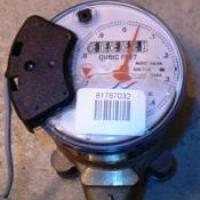Water Supply Secondary Disinfection

In a continuing effort to provide quality drinking water, the City of Woodburn recently implemented a secondary disinfection process for the water distribution system. The process selected for disinfection of the distribution system is referred to as “Chloramination”, and was fully implemented in 2011.
Chloramination is a disinfection technique used to treat water for public health protection. Chloramines are formed when ammonia and chlorine are combined in water and have proven effective in disinfecting drinking water. Chloraminated drinking water is perfectly safe for drinking, bathing, cooking and other daily water uses. For the majority of customers there will be no negative impacts from the use of chloramines. However, there are two groups of customers who need to take special care with chloraminated water: kidney dialysis patients and customers who keep fish, aquatic or semi-aquatic life.
Following are questions and answers that address common customer questions:
What is the current drinking water disinfection method?
Previously, the City of Woodburn did not disinfect its water supply system. Under current federal and state regulations, the City is not required to disinfect its water supply system because the source of its water supply is groundwater. However, the City had already installed and implemented facilities to provide primary treatment for the removal of iron, manganese, and other undesirable elements and compounds, to address water quality.
What is chloramination?
Chloramination is the use of both ammonia and chlorine to disinfect water. In many cases, both ammonia and chlorine are added at carefully controlled quantities to create an appropriate concentration of chloramines to treat the water. However, Woodburn’s water source, groundwater, contains sufficient naturally occurring ammonia to combine with added chlorine to produce the concentration of chloramines needed for disinfection. The resulting chloramines are effective in killing many kinds of bacteria and other germs that may be harmful to personal health. Chloraminated water is perfectly safe to drink.
How will Chloramination affect our water customers?
For most customers, the only noticeable change will be in improved drinking water quality. With chloramination, chlorine smell and taste will be minimal and less noticeable than using free chlorine as a disinfection process. During the initial disinfection implementation period, some customers may have noticed a discoloration of the water as the chloramines react with organic and inorganic residue currently in the distribution system.
Two groups of water customers, kidney dialysis patients and fish (aquatic life) ownersmust take precautions. People with weakened immune systems, including infants, elderly people, persons with HIV/AIDS, and those who are undergoing chemotherapy should consult a health professional about whether to use specially treated water in lieu of water from a municipal source disinfected in accordance with federal and state water quality regulations. Any customer with concerns regarding the use of disinfected water should visit the City website for additional information or use the contact information below.
Why will kidney dialysis patients and fish owners be affected by chloramines?
Customers who use drinking water for dialysis treatment or in fish tanks and/or in aquaculture will need to make some changes. Chloramines are harmful when they go directly into the bloodstream. In the dialysis process, water comes into contact with blood across a permeable membrane. Chloramines in dialysis water would be toxic, and therefore must be removed from water used in kidney dialysis machines. Fish and other aquatic life also take chloramines directly into their bloodstreams, so chloramines must be removed from aquariums and fish bowls.
What precautions should kidney dialysis patients take?
Chloramines must be removed from the water used in kidney dialysis machines. Medical centers that perform dialysis and dialysis centers are responsible for purifying water that enters the dialysis machines. The City will notify physicians, clinics and medical facilities in the community about the need to remove chloramines from the water used in dialysis machines. Customers with home dialysis equipment should contact their physicians regarding chloramination and how it will affect them. They should also check with the equipment manufacturer for additional information.
What precautions should fish, aquatic life owners take?
Chloramines should be removed from water that is used in fish tanks, ponds and aquariums. Businesses that sell, keep fish or other aquatic life in aquariums or ponds are encouraged to contact a pet supply company about how to treat their water to remove chloramines before using drinking water in an aquarium. Similarly, customers who use drinking water for aquaculture (growing plants in a water tank or pond) are encouraged to get expert advice regarding procedures needed to neutralize or remove chloramines. Also, restaurants and grocery stores that have aquatic life, such as live lobster tanks, must take special precautions to treat the water.
Will chloramination affect routine business water uses?
Chloramination will not affect routine water uses. However, businesses and other establishments that use municipal drinking water for commercial laundering operations, laboratory procedures and other processes in which water quality must be carefully controlled should obtain advice from equipment manufacturers or other suppliers regarding any process changes that may be needed.
Will chloramination affect routine household uses?
Chloramination will not affect routine water uses such as food preparation, household laundering, dishwashing, watering plants, etc. Chloramines will not have any effect on plants of any type, and will usually be removed by the naturally high chlorine demand of soil.
What methods are available to remove chloramine?
Unlike chlorine, chloramines cannot be removed by boiling or allowing the water to sit at room temperature over an extended period of time. There are, however, commercial water treatment products, such as carbon filtration systems, available if you feel a need to remove chloramines from your drinking water. If you use a carbon filter, it must contain high quality granular activated carbon media and you must allow sufficient contact time. Most water softeners are not designed to remove chloramines.
How can I get more information?
Contact Eric Liljequist, Public Works Director at 503-982-5240.
For related links concerning drinking water disinfection please see:
- Complete Environmental Protection Agency FAQ's on Chloramine
- National Sanitation Foundation: Water Treatment Systems

